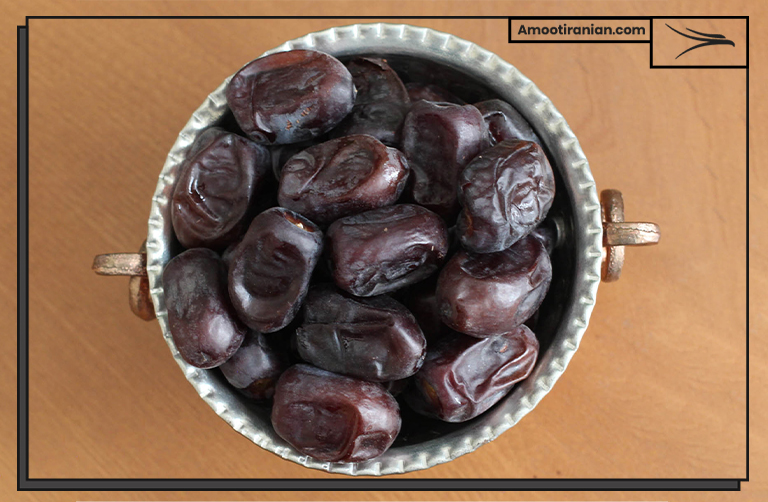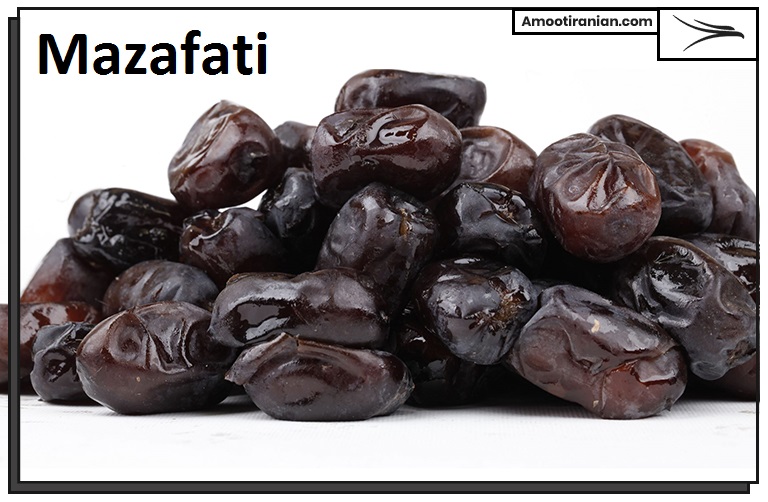Do Dates Have Iron?
Yes, dates contain iron. Most date varieties provide 0.7-1.8 milligrams of iron per 100 grams, which represents 7-12% of daily iron needs for adults. Mazafati dates contain approximately 1.3mg iron per 100g, while piarom dates offer 1.8mg per 100g. The iron in dates is naturally bioavailable and easily absorbed when consumed with vitamin C-rich foods.
Iron deficiency affects nearly 2 billion people worldwide, making it the most common nutritional deficiency globally according to the World Health Organization.
My take is that dates represent one of nature’s most underestimated iron sources, particularly when you understand the significant variations between different varieties and how to maximize their nutritional benefits.
What is the Iron Content of Dried Dates?
Iron content in dried dates varies significantly depending on the variety, processing method, and origin, but most varieties contain between 0.3 to 2.1 milligrams of iron per 100 grams.
Dried dates generally contain higher iron concentrations than fresh dates due to the dehydration process that concentrates nutrients. The removal of water content intensifies the mineral density, making dried varieties particularly valuable for addressing iron deficiency concerns.
Mazafati dates, when properly dried, contain approximately 1.3 milligrams of iron per 100 grams, placing them among the moderate iron-rich date varieties available in the global market. Our experience at Amoot Iranian has shown that mazafati dates maintain excellent iron bioavailability even after the drying process.
Processing methods significantly impact the final iron content, with sun-dried dates typically retaining more minerals compared to artificially dehydrated varieties. Traditional drying techniques used in Iran and other Middle Eastern countries often preserve higher iron levels than modern industrial methods.
Storage conditions also influence iron retention, as exposure to excessive heat and moisture can degrade mineral content over time. Proper packaging and controlled environments help maintain the nutritional integrity of dates during extended storage periods.

Are There Differences in Iron Content Between Different Date Varieties?
Date varieties show remarkable differences in iron content, with some containing nearly seven times more iron than others depending on their genetic makeup and growing conditions.
Genetic factors play a crucial role in determining iron accumulation, as different date palm cultivars have varying abilities to absorb and concentrate minerals from soil. Research published in the Journal of Food Composition and Analysis demonstrates that variety selection significantly impacts nutritional profiles.
Growing conditions including soil composition, irrigation practices, and climate directly influence the iron content of dates. Date palms grown in iron-rich soils naturally produce fruits with higher mineral concentrations compared to those cultivated in nutrient-depleted environments.
Harvesting timing affects iron levels, with dates picked at optimal ripeness containing peak mineral concentrations. Our suppliers at Amoot Iranian carefully time harvests to ensure maximum nutritional value in each variety we offer.
Regional variations exist even within the same variety, as environmental factors specific to growing regions create unique nutritional profiles. Iranian dates, particularly those from Kerman and Khuzestan provinces, often exhibit superior iron content due to ideal growing conditions.
Iron Content Comparison Table by Date Variety
| Date Variety | Iron Content (mg/100g) | Origin | Texture | Best Use |
|---|---|---|---|---|
| Mazafati Dates | 1.3 | Iran | Soft, moist | Fresh consumption |
| Piarom Dates | 1.8 | Iran | Semi-dry | Snacking, cooking |
| Kabkab Dates | 1.1 | Iran | Soft | Processing, syrup |
| Medjool Dates | 0.9 | Various | Large, soft | Premium market |
| Deglet Noor | 0.7 | Tunisia/Algeria | Semi-dry | Baking, stuffing |
| Barhi Dates | 1.5 | Iraq/Iran | Crunchy/soft | Fresh eating |
| Zahidi Dates | 1.2 | Iraq | Firm | Cooking, export |
| Halawi Dates | 1.0 | Iraq | Soft, sweet | Confections |
Do Dates Have High Iron?
Iron levels in dates are moderate compared to other dried fruits, providing approximately 7-12% of the daily recommended iron intake per 100-gram serving for most adults.
Comparative analysis shows that dates contain more iron than many popular fruits but less than iron-rich foods like spinach, lentils, or red meat. A 100-gram serving of dates provides roughly the same iron as a medium-sized apple or banana.
Bioavailability of iron from dates is enhanced by their natural vitamin C content and organic acid compounds that improve mineral absorption in the digestive system. Unlike synthetic iron supplements, the iron in dates comes with co-factors that support optimal utilization by the body.
Absorption rates for iron from dates typically range between 15-25%, which is considered good for plant-based iron sources. The presence of natural sugars and amino acids in dates creates an ideal environment for iron uptake in the small intestine.
Daily value considerations show that consuming 200 grams of iron-rich date varieties can provide approximately 15-20% of an adult’s daily iron requirements. This makes dates a valuable supplementary iron source rather than a primary one.

How Many Dates to Get Iron?
Iron requirements for adults range from 8-18 milligrams daily depending on age, gender, and physiological status, with women of reproductive age needing the highest amounts.
Calculation methods for determining optimal date consumption involve considering individual iron needs, current dietary intake, and the specific iron content of chosen date varieties. For most adults, consuming 150-200 grams of iron-rich dates daily can provide meaningful iron supplementation.
Practical serving recommendations suggest eating 8-12 medium-sized mazafati dates daily to contribute approximately 2-3 milligrams of dietary iron. This amount represents a reasonable portion that can be easily incorporated into most eating patterns without excessive calorie intake.
Timing considerations indicate that consuming dates with vitamin C-rich foods like citrus fruits or tomatoes can significantly enhance iron absorption. We recommend pairing date consumption with foods that contain ascorbic acid for maximum nutritional benefit.
Individual variations in iron needs mean that people with diagnosed iron deficiency may require larger portions or should combine dates with other iron-rich foods. Pregnant women, athletes, and individuals with certain medical conditions may need to adjust their date consumption accordingly.
Absorption optimization strategies include consuming dates on an empty stomach when possible and avoiding pairing them with calcium-rich foods or tea, which can inhibit iron uptake. The natural fruit acids in dates help create an acidic environment that promotes iron solubility.
Can Dates Help with Iron Deficiency?
Iron deficiency treatment typically requires a multifaceted approach, and dates can serve as a valuable component of a comprehensive nutritional strategy rather than a standalone solution.
Clinical evidence suggests that regular consumption of iron-rich foods like dates can help prevent mild iron deficiency when combined with a balanced diet. A study published in the Journal of Nutritional Science found that dried fruits contributed significantly to iron intake in populations with limited access to meat products.
Mechanism of action involves the gradual replenishment of iron stores through consistent dietary intake over time. Unlike iron supplements that can cause digestive discomfort, the iron in dates is naturally bound to organic compounds that are gentler on the digestive system.
Supportive nutrients in dates including vitamin C, folate, and vitamin B6 work synergistically to support healthy red blood cell formation and iron metabolism. These co-factors make dates more effective than isolated iron sources for addressing deficiency concerns.
Real-world application shows that incorporating dates into daily eating patterns can help maintain adequate iron levels in individuals at risk of deficiency. Our customers at Amoot Iranian often report improved energy levels after consistently consuming our iron-rich date varieties.
Limitation awareness is important, as severe iron deficiency anemia requires medical intervention and supervised treatment protocols. Dates should complement, not replace, appropriate medical care for diagnosed iron deficiency conditions.
Prevention strategies using dates work best when started before iron stores become critically depleted. Regular consumption of iron-rich date varieties can help maintain healthy iron status in vulnerable populations including children, adolescents, and women of reproductive age.
Quality considerations emphasize choosing high-quality, properly stored dates to ensure maximum iron content and bioavailability. Our wholesale dates undergo careful quality control to preserve their nutritional integrity from harvest to delivery.
Dietary integration recommendations include using dates as natural sweeteners in iron-rich meals, incorporating them into breakfast cereals with vitamin C sources, and consuming them as energy-dense snacks between meals. Creative preparation methods can help maximize both iron intake and overall nutritional value.
Monitoring progress involves tracking energy levels, overall health status, and periodic blood testing when addressing iron deficiency concerns. Healthcare providers can help determine whether date consumption is contributing effectively to iron status improvement.
Cost-effectiveness analysis shows that dates provide an affordable source of bioavailable iron compared to many processed supplements or specialty foods. The long shelf life and natural preservation qualities of dates make them particularly valuable for consistent iron supplementation programs.
Cultural considerations highlight that dates have been traditionally valued for their health-promoting properties in many cultures, particularly in regions where iron deficiency is common. This traditional knowledge aligns well with modern nutritional understanding of dates’ iron content.
Preparation methods can influence iron bioavailability, with soaking dates in water overnight sometimes increasing mineral solubility. Some traditional preparation techniques used in Iranian date cultivation may enhance the nutritional accessibility of iron and other minerals.
Combination strategies work best when dates are consumed as part of iron-rich meal patterns that include legumes, leafy greens, and lean proteins. This comprehensive approach addresses iron deficiency more effectively than relying on any single food source.
Seasonal availability of fresh dates can impact iron intake patterns, making dried varieties particularly valuable for maintaining consistent mineral consumption throughout the year. Our fresh dates provide seasonal variety while dried options ensure year-round availability.
Storage and handling practices significantly affect the retained iron content of dates, with proper packaging and temperature control helping preserve nutritional quality. Professional suppliers like Amoot Iranian use specialized storage techniques to maintain mineral content during distribution.
Conclusion
Iron content in dates provides a meaningful contribution to daily mineral intake, with varieties like mazafati dates and piarom dates offering particularly good sources of bioavailable iron for addressing nutritional needs.
Evidence clearly shows that dates contain moderate but significant amounts of iron, ranging from 0.7 to 1.8 milligrams per 100 grams depending on the variety and processing method. While not as iron-dense as meat or legumes, dates offer unique advantages including excellent digestibility, natural co-factors for absorption, and pleasant taste that encourages consistent consumption.
Strategic incorporation of dates into daily eating patterns can help prevent iron deficiency when combined with a balanced diet, though severe deficiency requires medical supervision and comprehensive treatment approaches. The bioavailable iron in dates, particularly from high-quality sources like those provided by Amoot Iranian, represents a valuable tool for maintaining healthy iron status.
Practical recommendations include consuming 150-200 grams of iron-rich date varieties daily, pairing them with vitamin C sources for enhanced absorption, and choosing reputable suppliers who maintain proper storage and handling practices to preserve nutritional integrity.
Amoot Iranian Trading Company
🌴 The Largest Dates Supplier in the World
We export premium quality Mazafati, Kabkab, Piarom, Kalute and many other date varieties worldwide.
📞 Call us on WhatsApp:
+98 902 360 6419
✉️ Email us at:
info@amootiranian.com
